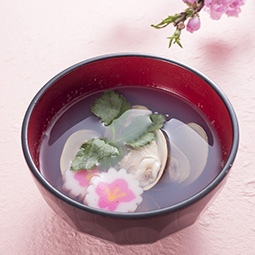VOL.195 AUGUST 2024
EXPLORE THE UNIQUE CHARM OF MANGA IN JAPAN
[Treasures of Japanese Culture] The Japanese Sense of Beauty: Appreciating Simplicity

Photo: Ruth Marie Jarman
Ruth Marie Jarman, born in North Carolina but raised in the US State of Hawaii, has lived in Japan for over 35 years. She has worked on projects supporting the inbound strategies of Japanese companies and local governments and has a deep knowledge and understanding of the appeal of Japan. This month, we requested her to discuss the Japanese sense of beauty.
Most people who visit Japan for the first time are surprised by the clean and comfortable bathrooms at train stations and the fact that the streets are clean despite the lack of trash cans, and that there are no unpleasant smells. At the same time, they probably wonder why Japan is such a clean place.
Of course, in every country there are many people who like to keep things clean. However, there are very few cities in the world where public spaces such as train stations and streets are virtually garbage-free and kept as clear and clean as in Japan. What is the difference between Japan and other countries?

In Japan, children are taught by their parents, as part of their character building, to use things with care and to keep public spaces clean. They learn not to litter in the streets, to tidy up after themselves as much as possible in restaurants such as putting the dishes in order, and to be considerate of others in public places so as not to inconvenience them. This commitment to cleanliness and consideration for others is a spirit shared by many Japanese and has become established as natural behavior that most Japanese people can truly take for granted.
In my life in Japan, I have often been surprised by this aesthetic that I find is common among Japanese people. For example, I once saw elementary school children practicing baseball on a field along a walking route I often take. Their bags were lined up in front of a wall, neatly organized to the point of perfection. The experience left me in awe of this wonderful culture and made me realize that the practice of turning this kind of behavior into a habit from early on has created a deep culture of care and consideration that is somewhat unique to Japan. In my experience, if this were in the US, bags would be laying around in a haphazard, less organized way (which can also be freeing for kids).

In Japan, children learn the importance of tidiness and order at an early age, both in school and at home. (Left: An example of children putting their bags in order at baseball practice, as described in the article. Right: Children neatly arranging their shoes at the entrance of their home).
It seems too simple to answer the question, “Why are Japanese cities so clean?” with, “Because Japanese people like to keep things clean.” By delving deeper into the cultural background of this aptitude for tidiness, I feel that the Japanese sense of beauty, which appreciates simplicity, may be at its root.

Washi, a traditional Japanese paper, is painstakingly crafted sheet by sheet by artisans using traditional tools (right). “The Japanese sense of beauty can be experienced in the simplicity of the natural texture of the paper,” says Ruth Marie Jarman. The photo on the left, showing Mino Washi, is an example of how washi paper can have many different textures.
For example, the Japanese dish osuimono* is sometimes decorated with small flower-shaped ingredients in a clear broth to represent the four seasons. Traditional Japanese washi paper is also extremely simple, yet, filled with elegant beauty. The Japanese sense of beauty, which places great value on the pursuit of simplicity in the finished product despite the complexity of the creative process, seems to reflect the mentality of “love of a clean look,”. This aesthetic naturally encourages utmost tidiness in all aspects.
If you are coming to Japan to stay for a long time or to live here, it is important to understand the cultural differences between your home country and Japan. At first, you may have many questions or be surprised by the behavior of the Japanese people around you. In such situations, instead of acting according to what is considered common sense in your home country, observe how Japanese people around you behave and try to imitate them. When traveling by train or bus, hold onto your trash until you reach a place with a trash can. In places where shoes are taken off, take off your shoes and put them neatly in a getabako (shoe cabinet). I believe that if you carefully observe and imitate, you will experience the Japanese culture and sense of beauty more deeply and discover many new and fascinating aspects of Japan.

Ruth Marie Jarman
An American-born entrepreneur raised in Hawaii, Jarman joined Recruit Co., Ltd. in 1988 and has lived in Japan for over 35 years. She began her career in translation and interpretation as a small business owner in 1992. She is currently the CEO of Jarman International KK and has published six books on Japan. She serves as an Independent Director on boards at three publicly listed Japanese corporations, is one of the rare non-Japanese holders of the Japanese Takken Real Estate license and appears in various media including NHK Word Radio’s “Living in Japan”. In 2024, she was appointed a member of the NHK International Broadcast Programs Council and continues to support Japan’s internationalization in a variety of capacities.![]()
* Osuimono is a type of traditional Japanese soup. It contains fish or chicken, kamaboko (a seafood product made from pureed fish that is steamed and formed into various shapes), and other ingredients in a broth of katsuobushi (dried bonito flakes), kombu (kelp), etc., with aromatic Japanese herbs such as sansho (Japanese pepper) and yuzu (a type of citrus fruit). Flower-shaped kamaboko are used to add color to osuimono.
By Ruth Marie Jarman
Photo: Ruth Marie Jarman; PIXTA

